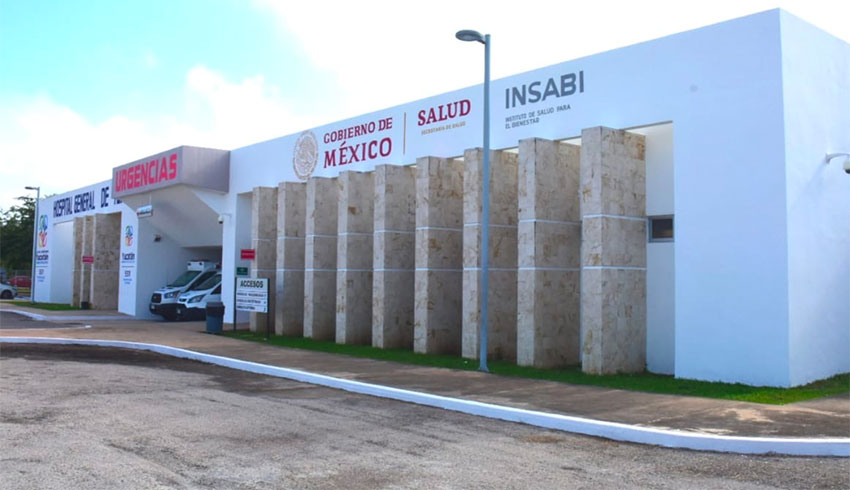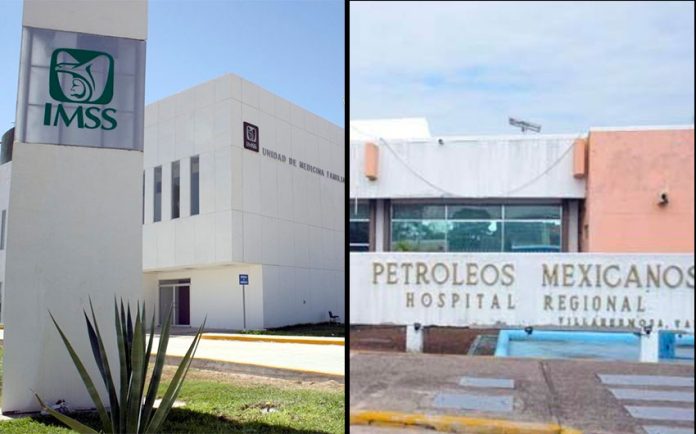Mexico is spending less than half the amount it should on its health system, according to Pan American Health Organization (PAHO) recommendations.
Spending on health has declined in recent years from 2.9% of GDP in 2012 to 2.5% in 2020. The PAHO recommends spending at least 6%.
The public health agency has noted that countries that have spent that percentage of GDP or more on their health systems in recent years have had the most success in providing quality health care to greater numbers of people.
Mexico’s spending on health is dwarfed by that of its northern neighbor, the United States, which allocated 14.3% of its GDP to the sector last year.
Germany and France spend 9.9% and 9.3%, according to a report by Forbes México, while Japan spends 9.8%.
Mexico’s spending is also well below several Latin American countries including Costa Rica, Chile and Colombia, all of which spend more than 5% of GDP on health.
Forbes noted that health spending in Mexico declined over the past decade even as Mexico’s population increased by almost 13 million people.
It also noted that the limited spending on health is divided between seven different public systems including those operated by the Mexican Social Security Institute (IMSS), the State Workers Social Security Institute (ISSTE), the state oil company Pemex and the Ministry of National Defense.
The funding allocated to each system is not equitable: for every peso spent per member of IMSS Prospera, a subsystem that provides health care to people in poor rural areas, 4 pesos per insured person are allocated to the broader IMSS system, 5 pesos go to the ISSSTE system and 10 pesos are spent on the Pemex system, the news website MVS Noticias reported.
During a recent virtual forum on Mexico’s health system, Rodolfo de la Torre, director of social development at the Espinosa Yglesias think tank, noted that spending on health care is not equitable across the country either.
He said the government spends 300,000 pesos (US $13,700) per person per year on the health system in Mexico City but less than 30,000 pesos per capita in some states.

Participating in the same forum, Mariana Campos of the public policy think tank México Evalúa said that the most serious issue is that since 2019, not all of the resources authorized for the health sector have been used. As a result, programs aimed at preventing chronic diseases that are among the leading causes of death in Mexico, such as diabetes, have been neglected, she said.
Rogelio Goméz Hermosillo, a representative of Citizens Action Against Poverty, a group currently calling on the government to provide a basic income to people who have lost their jobs due to the coronavirus, said that 20 million people don’t have access to free healthcare because they’re not registered with any of the public systems even though the system known as Insabi is supposed to provide medical services to people with no other insurance.
The forum participants proposed that the government increase spending on health to 3.5% of GDP as a first step toward improving the public health system as well as access to it.
They said that the Insabi scheme, which replaced the universal healthcare program known as Seguro Popular at the start of this year, should have the same capacity to provide medical services as the IMSS system. That would ensure that informal sector workers, who make up about 60% of the nation’s workforce, would have the same access to health services as their formal sector counterparts.
The underfunded public health system has been cited as a factor in the high number of Covid-19 deaths – 62,594 as of Thursday.
In a report published in early June, the Bloomberg News bureau chief in Mexico wrote that the public health system was woefully unprepared to deal with the coronavirus pandemic, noting that many hospitals have a shortage of basic equipment, medication and personnel and some don’t even have soap.
Hospitals in several cities including Acapulco, Tijuana and Matamoros struggled to cope at different stages of the pandemic as they filled up with seriously ill coronavirus patients.
But President López Obrador has said that there have been enough hospital beds and ventilators for everyone that needed them and despite the high Covid-19 death toll, he asserted this week that the government’s strategy to manage the pandemic has worked very well.
Source: Forbes México (sp), MVS Noticias (sp)
